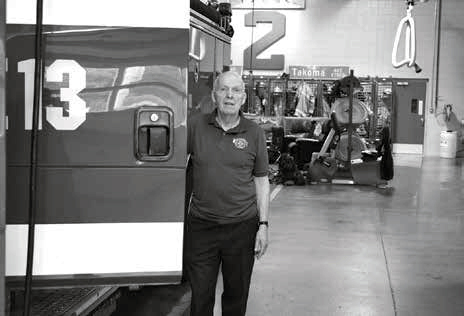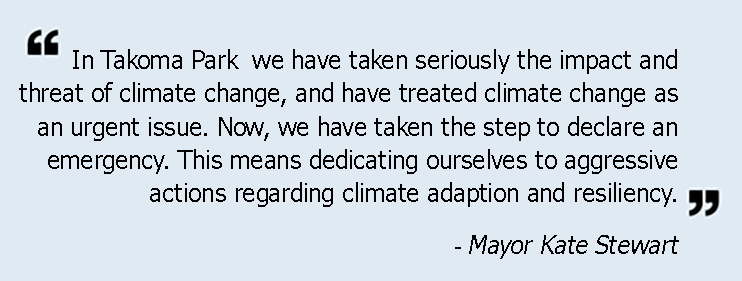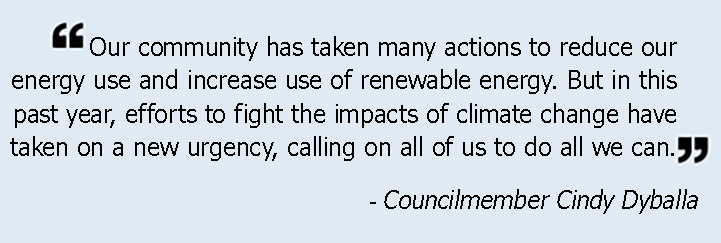By Jan van Zutphen, Urban Forest Manager
Trees are a great resource for a community. The environmental and social benefits trees provide are significant. However, trees need to be maintained to provide those benefits in a safe manner. Large trees located near, for example, buildings, roads and playgrounds need to be monitored regularly to ensure any dying branches, structural problems or insect/disease issues get identified and addressed. Tree hazards can be easily overlooked by the untrained eye. In our busy lives, few of us spend much time looking up into the tree canopy of the trees in our yard. A large tree branch can weigh several hundred pounds, and if it fails, can cause extensive property damage and severe injury or even death.
Preventing Tree (limb) Failure
Tree or tree limb failure is usually preventable. It is recommended that trees, especially large trees, be inspected by a Licensed Tree Expert (LTE) every two to three years. These regular inspections by a trained professional can identify structural issues, dead or dying branches or tree illness and disease. Typically, it does not cost anything to have a LTE visit a property and inspect trees.
If a more detailed inspection is recommended, a tree care company will provide an estimate of the cost for those services. It is recommended that you contact several tree care companies and have their LTEs visit the property and provide recommendations and quotes for any needed tree work. Be sure that the tree care company you hire is licensed by the State of Maryland and insured. It is also beneficial to develop a long-term relationship with an LTE who will become familiar with your trees and their health over time.
Determining the likelihood of tree failure requires a significant level of experience and knowledge about how trees grow, how they fail and what characteristics make a tree “risky.” Assessing tree risk requires special training and experience, and LTEs are specifically knowledgeable in determining the structural integrity of a tree and the risk it may present. While there are self-surveys of trees that property owners can conduct to determine obvious issues, there is no substitute for a professional assessment of the health of a tree.
Following City and State Regulations
When you have any tree work done on your property make sure you adhere to the City’s tree regulations, which can be found on the City’s website at takomaparkmd.gov/services/permits/treepermits. The removal of any tree 7’ 5/8” in diameter or greater requires a tree removal permit or waiver. The pruning of more than 5 percent of the live canopy of a tree 7 5/8” in diameter or greater requires the submission of a tree impact assessment. An emergency tree removal waiver will be issued to a property owner if a tree is highly hazardous, poses an immediate threat to people and property and the hazard cannot be mitigated through pruning or other tree maintenance.
What about my neighbor’s trees? Maryland has adopted the “Massachusetts Self-Help Rule” that says you must assume responsibility for the care and preservation of your own property. This means that you can cut branches from a tree on your neighbor’s property that extend into your property. Always notify the tree owner first. However, you may not destroy the tree in the process, nor can you cut the tree down. Also, you must stop at the property line unless the neighbor has given you permission to do otherwise, and it is best to have that permission in writing.
When a tree or its branches fall, it is considered an “Act of God” unless the tree was known to be dead or hazardous. This means the portion of the tree and the damage from it that is on your property is your responsibility to clean up. The portion of the tree that ends up on a neighbor’s property, and any damage to the neighbor’s property, is his/her responsibility. Such accidents are normally covered by the affected owner’s home owner’s insurance and are usually resolved by reporting a claim. The exception to this general rule is that the owner of the property where the tree originated may be responsible for damage to a neighbor’s property if the owner knew, or had good reason to know, that the tree presented a danger. A tree whose trunk (even a small portion of the trunk) straddles the property line may be a shared tree, and therefore, any cost for pruning, maintenance or removal would be a shared cost.
Working Together on Safety
The City of Takoma Park encourages neighbors to discuss tree issues long before tree failure becomes a problem, and responsibility for any damage becomes part of the discussion. If your neighbor’s tree is hazardous, you have communicated that to your neighbor and your neighbor is not addressing the issue, then the City may step in and require the neighbor to have the hazard mitigated.
As the City’s Urban Forest Manager (UFM), my focus is primarily on City trees and inspecting trees on private property related to review of permit applications for tree removal or tree protection. However, when a tree on private property is hazardous and I become aware of it either by noticing it myself or being notified by someone else, then I notify the property owner of the hazard and their responsibility. The City Code allows for the issuance of a notice of violation to the property owner requiring that the hazardous tree issue be addressed within a certain time frame.
For those property owners who have limited income, the City has established an Emergency Tree Fund to assist with the costs of removal of a hazardous tree. Residents can apply for those funds through the UFM.
In closing, I hope you will be able to join us for the Tree Canopy Assessment Seminar taking place on March 23.
Tree Canopy Assessment Seminar:
Takoma Park Tree Canopy Assessment Seminar
Presented by Noah Ahles, University of Vermont
Saturday, March 23, 2019
Morning Session 10 am – 12 pm, Community Center Auditorium
- Morning session will present findings on the current status of the City’s tree canopy using 2018 LiDAR data.
- The morning session will be a general overview, the afternoon session will be a focused discussion with members of the Tree Commission and Committee on The Environment
Afternoon Session 1 pm – 3 pm, Community Center Auditorium
- Afternoon session will be a planning discussion about establishing a Citywide tree canopy goal and implementation plan.
This article appeared in the March 2019 edition of the Takoma Park Newsletter. The Takoma Park Newsletter is available for download here.



